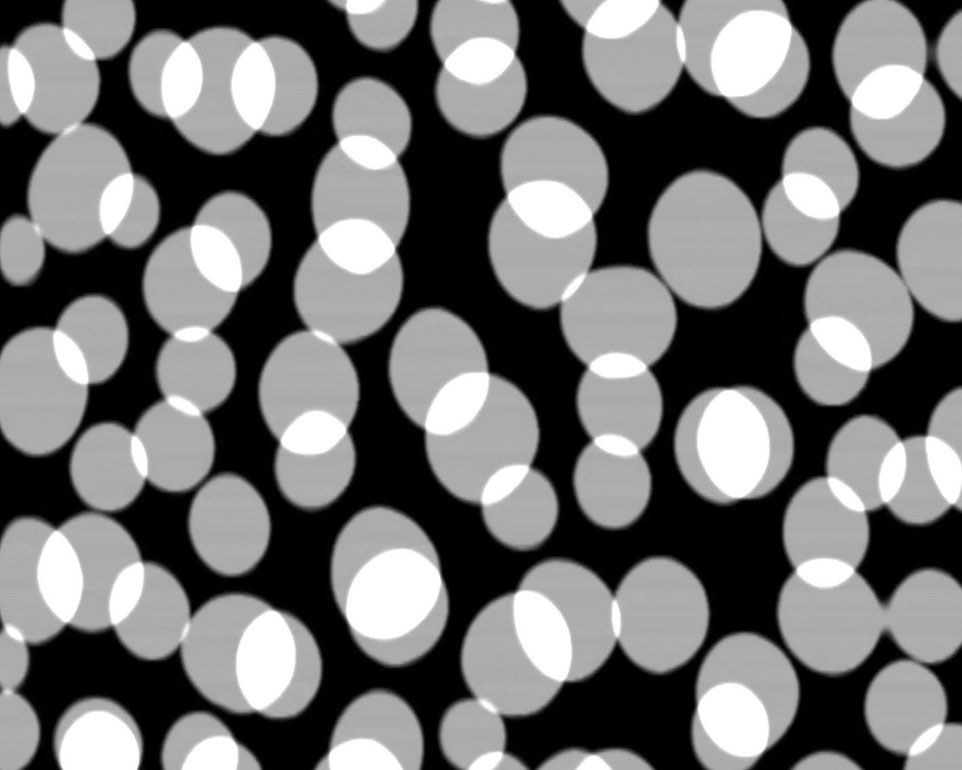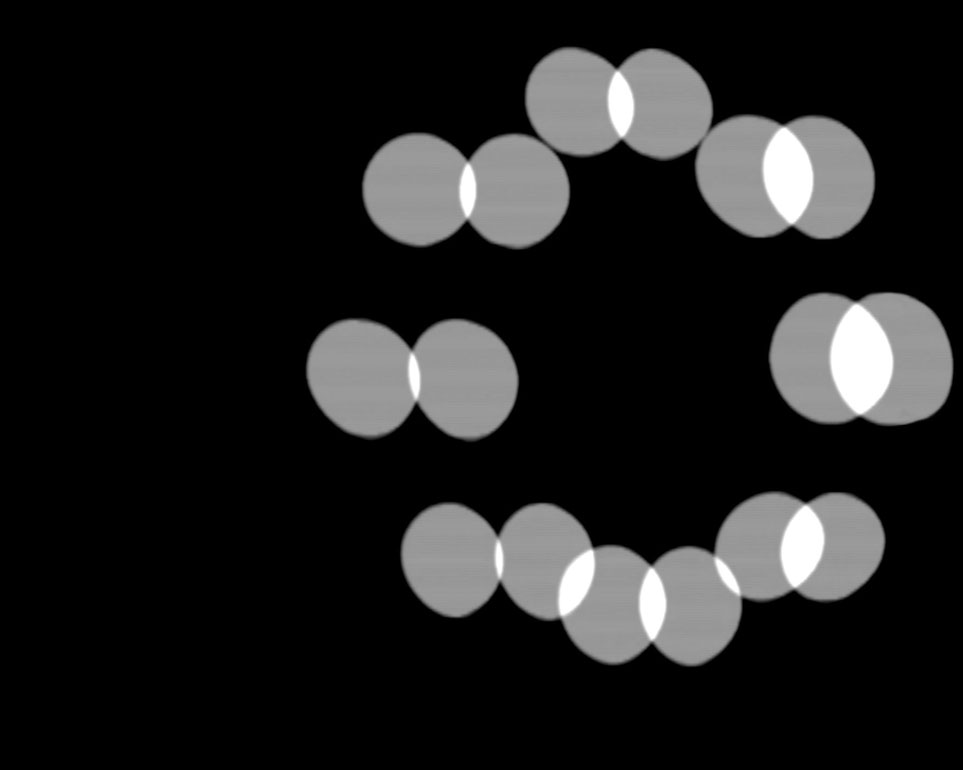ORDER-RE-ORDER
"Particles in Space" and "Free Radicals" are two films the New Zealand artist Len Lye completed in 1979. Dots and lines scratched onto black film dance across the screen to the rhythm of African drums in a (seemingly) chaotic way.
As masterpieces of abstract film they represent a climax in Lye´s artistic exploration of "cinematographic perception", which is directed by the energy of the movement alone. This experience´s principle is followed in the abstract videos by Barbara Doser and Hofstetter Kurt, which they produce under the label Parallel Media. As optical and acoustic stimulation, they´re aimed directly at the viewer´s retina and auditory canal, and therefore straight at his or her brain.
Their latest work, ORDER-RE-ORDER, complies with one of Einstein´s theories, that "nothing can exist without order, and nothing can be created without chaos". The visual starting point is video feedback which forms a ring of rotating points of light. This is repeatedly filmed from a monitor on which the scrolling speed is manipulated, thereby animating and accelerating the light cells, which plunge into chaos several times. Because of the sluggishness of human perception, they lose their form and "color", racing through the black cosmos of the projection screen in the form of particles.
The acoustic-musical level - based on the topological model of a Möbius strip, which permits uninterrupted, never-ending movement from the inside out and back inside - proves to be anything but a parallel universe. On the contrary, the sound, the insistent echoed signal, the spherical clouds and the many-voiced humming which dominates in the latter part, represent a kind of pulse generator that apparently steers the directions in which the light cells move. And while at times visual patterns seem to appear for brief moments in the swirl of the white and gray circular areas, the intended new order which could be created from the chaos turns out to be uncertain and is left to the flow of kinetic energy.
(Gerald Weber)
ORDER-RE-ORDER (texte français)
Point de départ visuel, une rétroaction vidéo forme un cercle de points lumineux tournant sur eux-mêmes. En refilmant plusieurs fois la vidéo sur lécran après avoir manipulé la vitesse de déroulement des images, on obtient une animation et une accélation des cellules lumineuses qui plongent régulièrement dans le chaos.
Du fait de la lenteur de la perception sensorielle humaine, les cellules perdent leur forme et leur couleur, particules traversant à toute allure le cosmos noir de lécran.
Le plan acoustico-musical conçu selon le modèle topologique dun ruban de Möbius qui permet un mouvement ininterrompu et infini de lintérieur vers lextérieur, puis à nouveau vers lintérieur ne se présente nullement ici comme un univers parallèle. Au contraire, le son le signal décho et ses battements, les nuages sphériques, le bourdonnement polyphonique qui domine vers la fin agit comme une sorte de générateur dimpulsion qui semble imposer aux cellules lumineuses la direction de leurs mouvements.
Et sil arrive même que, ne serait-ce que pour de brefs instants, des motifs visuels se dégagent du tourbillon des sphères blanches et grises, le nouvel ordre escompté qui pourrait naître du chaos, reste finalement incertain, abandonné au flux de lénergie motrice. (Gerald Weber)
Traduction: Françoise Guiguet
ORDER-RE-ORDER
2006
Austria
7 min
Animation/Computeranimation
No Dialogue


